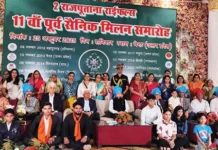[ Dr Yeshi Gyesen ]
Introduction:
Long before the spread of Buddhism across the high plateau, the people of Tibet and the wider Trans-Himalayan region followed a spiritual system known as Bon. This faith, often referred to as Ancient Bon to distinguish it from the later, reformed Yungdrung Bon, embodied the indigenous religious worldview of the Himalayas. Rooted in shamanic practices, animism, and ritual performances, Bon served as the cultural and spiritual foundation of Tibet. Though reshaped by the arrival of Buddhism in the 7th and 8th centuries CE, Ancient Bon remains a vital key to understanding the religious history of the Trans-Himalayan world.
Origins and foundations:
The precise origins of Ancient Bon are difficult to trace, given its reliance on oral transmission and ritual performance rather than written texts. At its core, Bon reflected the ancient human impulse to explain and engage with the forces of nature. Sacred mountains, rivers, lakes, and skies were seen as the abodes of divine beings, while spirits and ancestral protectors played a vital role in safeguarding communities.
Later Bon traditions attribute its founding to the legendary teacher Tönpa Shenrab Miwoche, believed to have taught the Bon doctrine in the distant and semi-mythical land of Olmo Lungring. Scholars, however, recognize this as a mythologized account, suggesting that Ancient Bon arose from a complex blend of indigenous shamanic practices, clan rituals, and cosmological myths native to Tibet and adjacent Himalayan regions.
Beliefs and practices:
The Ancient Bon faith was characterized less by philosophical systems and more by ritual centrality. Its practices can be broadly outlined as follows:
- Animism and spirit cults: Reverence for natural elements and a pantheon of local deities, including mountain gods (yul lha), water spirits (lu), and ancestral guardians.
- Shamanic mediation: Ritual specialists known as shen or bonpo mediated between humans and spirits, performing exorcisms, divinations, and healing rites.
- Funerary rites: Elaborate ceremonies guided souls safely into the afterlife, ensuring continuity between the living and the dead.
- Ritual sacrifices: Symbolic offerings of animals, food, and libations were made to appease deities and avert disasters.
- Oral tradition: Knowledge was transmitted orally through chants, myths, and ritual recitations, making the role of ritual specialists crucial to cultural memory.
Role in early Tibetan society:
Ancient Bon was not confined to villages and clans but played a central role in the political and cultural life of early Tibet. Historical accounts suggest that the Yarlung dynasty – the early Tibetan kings -employed Bon priests for state ceremonies, including royal funerals and rituals to secure military victory and agricultural prosperity. Archaeological discoveries from royal tombs in the Yarlung valley, such as sacrificial remains and ritual objects, further attest to Bon’s deep connection with the governance and cosmology of ancient Tibet.
Encounter with Buddhism:
The introduction of Buddhism in the 7th century CE transformed Tibet’s religious landscape. Early Buddhist chronicles often portrayed Bon as a rival faith, sometimes labelling it as superstition or sorcery. Yet Bon proved remarkably resilient. Rather than disappearing, it gradually absorbed Buddhist elements – scriptural forms, monastic practices, and philosophical frameworks – while retaining its indigenous identity. This synthesis gave rise to Yungdrung Bon, a reformed tradition that survives to this day in Tibet, Nepal, and parts of Arunachal Pradesh.
Scholarly perspectives:
Modern scholarship emphasizes that Ancient Bon was far more sophisticated than earlier dismissals suggested. Scholars such as Samten G Karmay and Per Kværne have shown that Bon possessed a rich ritual system and cosmological vision, elements of which influenced the development of Tibetan Buddhism itself. Research also highlights that Bon traditions extend beyond central Tibet, with surviving practices found among Himalayan communities such as the Monpa of Arunachal, the Dolpo-pa of Nepal, and certain Bhutanese groups.
Conclusion:
Ancient Bon, the pre-Buddhist religion of the Trans-Himalayan region, represents the original spiritual heritage of Tibet. Rooted in the worship of nature, ancestors, and spirits, it provided a worldview that harmonized humans with their environment and the unseen world. Though reshaped by centuries of interaction with Buddhism, Bon continues to preserve a distinct identity, bearing witness to the endurance of indigenous Himalayan traditions. To understand Ancient Bon is to understand the cultural foundations upon which much of Tibetan and Himalayan religion was built. (The contributor is Principal, DK Government College, Tawang)


